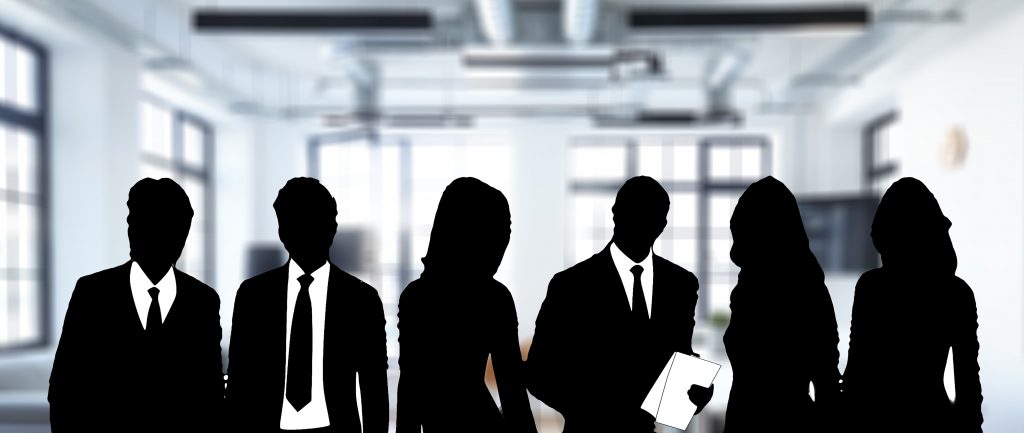When the Egyptian government ended the lockdown on July 1, albeit with minor ongoing restrictions, companies were in no hurry to bring all their employees back to the office. An Enterprise website survey of 16 listed businesses found 11 “still relying almost entirely on remote work for anyone whose job could possibly be done from home.” Companies surveyed ranged from large manufacturers, such as Nestlé and Procter & Gamble, to the U.N. Development Programme and Arqam, a think tank, and other service providers.
 Having at least some employees work from home is a rising trend. Dell Computers said it would bring only 50 percent of its 160,000 workers to offices, according to NBC News. Barclays and JPMorgan Chase & Co. employees will alternate between home and the office.
Having at least some employees work from home is a rising trend. Dell Computers said it would bring only 50 percent of its 160,000 workers to offices, according to NBC News. Barclays and JPMorgan Chase & Co. employees will alternate between home and the office.
Such arrangements raise questions about how post-COVID-19 offices will ensure social distancing among employees and visitors. Companies may even question the need to pay rent and maintenance for prime office space in the long term.
According to Flippo Lodi, the head of Innovation and Knowledge Management at UNStudio, which designs workspaces, the office of the future will be a “place for activities rather than a time to focus.”
Office evolution
The Industrial Revolution, which started in the United States and Europe in 1760, sparked the idea that both factory and white-collar employees must work in the same space to increase efficiency. That gave rise to open office spaces for desk employees. As the nature of work evolved, by the mid-20th century, open workspaces became cubicles that provided some separation among employees but didn’t give them much privacy. It worked well for staff with routine daily tasks but discouraged collaboration and teamwork.
In the 2000s, the open workspace returned as technology, innovation, and entrepreneurship resulted in startups with continually evolving products and services that challenged conventional companies. Collaborative work became the cornerstone of such firms’ success. “Technology has evolved to the point where you may not sit at the same desk every day,” said Jonathan Strickland, executive producer at iHeartMedia, on the company’s YouTube channel. “A computer will tell you which spaces are available when you arrive at the office, and you can choose which one you want.”
Back to work?
The immediate effect of the COVID-19 outbreak was that companies moved to a makeshift remote work setup where some processes were quickly modified to suit the new configuration.
That success has made several companies prefer that setup. Twitter CEO Jack Dorsey told his employees they can work remotely forever. Google and Facebook employees will work remotely for the rest of the year. “It saves money, increases productivity and agility, and is good for the environment,” said Kate Lister, president of Global Workplace Analytics, to CNBC in May. The news network estimated “working at home” increases the number of workdays by 22 days per year and saves employers $2,500 to $4,000.
However, adopting a full or hybrid remote work environment is not for everyone, said Mark Graham, professor of internet geography at Oxford Internet Institute. “For those who are used to going to work every day, they will eventually miss the physical contact and community,” he said, adding that such employees have long performed their jobs in collaborative ways. Changing could be problematic, even if a task lends itself to remote work.
In 2017, IBM and Yahoo asked all their employees who had permission to work remotely to come back to the office. Both companies found teams more successful when they are in the same room.
Rajneesh Narula, a professor of international business regulation at the Henley Business School in the University of Reading in the UK, believes knowledge workers could perform remotely only for a short time. “That type of work relies on sharing ideas,” he said to TRT World in July 2019. Such collaboration “makes you think outside your comfort zone and be more innovative as a result. That is what you want in a ‘Knowledge Economy.’ It is key to everything.”
Negotiating and closing deals also is difficult to do remotely. “You rely on subtle nonverbal gestures during those meetings. Those nuances can’t be seen in remote meetings,” said Narula.
Architecture and other project-based businesses also can’t be done remotely. “We can’t always visualize everything,” said Hans Chu, CEO of Chu Associates Ltd., an architecture firm, in a June 3 YouTube video. “Sometimes the team needs to be on location to see something in the real world.” Lodi, of UNStudio, also stressed the importance of architects working together when designing buildings and interior spaces. “I think one advantage to remote working in our industry is that everything is available with a click on a screen,” he says. “However, we still need a common physical space.”
Offices also can make it easier to achieve a good work-life balance over the long term, said Narula, adding that a defined physical space allows employees to stop working when they leave for home.

Redesigning the office
Meridith Essery, co-founder of Had.Collective, an office design firm, has adopted new concepts lockdowns. “It is the end of open office spaces,” she said to Yahoo Finance in May. “There are no conference or meeting rooms.”
With most clients, Essery relocates desks away from each other or at least has employees face away from one another. She also uses plexiglass panels to separate the desks of employees who must interact with each other. Essery also uses touchless technologies such as voice and gesture activated services for tasks like calling an elevator.
One of the more significant challenges was to create wider hallways to allow employees to pass each other at a safe distance. That also means they follow predetermined paths to move from one part of the office space to another.
For Chu, of Chu Associates, an architecture and interior design firm, an unexpected cost he faced while redesigning offices after lockdowns was the need for better acoustics. “Many more video and telephone calls are happening from the office, even if the workforce is not all there,” he explained.
Another costly aspect is ensuring consistency of design in multinational companies’ offices worldwide. “When it comes to global operations, local culture influences designs. Therefore we need to be more localized [within specific parameters] to ensure employees can perform,” said Amer Maleh, Global Sourcing Director at WeWork, in a YouTube video in June.
Meanwhile, companies rethinking the future of their work environments may alter their original strategy regarding branches. Maleh said some might make them smaller to localize their presence, while others may do the opposite.
New role
With the World Health Organization regularly stressing that the COVID-19 crisis is far from over, businesses should reexamine the purpose of offices. “We are already asking what the role of space should be,” says Lodi of UNStudios. “That answers the question of why we need offices.”
Maleh of WeWork believes the core purpose of open space is to encourage synergies among employees, which offices must retain. “It will be all about how to integrate the office into the lives of employees,” he said.
That means that the office must “go beyond work to be a place where people want to go to because working from home doesn’t offer them the same facilities or attractions,” said Chu.
One idea is for the office to become a place to foster creativity, rather than just a place to get things done, says Lodi of UNStudio. “That requires organizational changes [that foster] the new behavior and psychology of employees coming into the office,” he explains. And if they are happy, they will use the office more often.
Companies must have a clear idea of their ideal work environments in the next 12 months, Lodi says a task made more difficult by uncertainty in the short-term. The upside is the transition would likely be similar worldwide. “The world is currently at the same level of digitization,” said Lodi. “They all have the same sensibility.”
Chu urges companies to take office redesign seriously to “greatly reduce the enterprise’s carbon footprint.” That would be important to prepare for the next global crisis: a permanent change in the climate, he says.
“There is still a lot of work that companies must do to reach that level,” stressed Maleh of WeWork. “A lot of catching up.”







